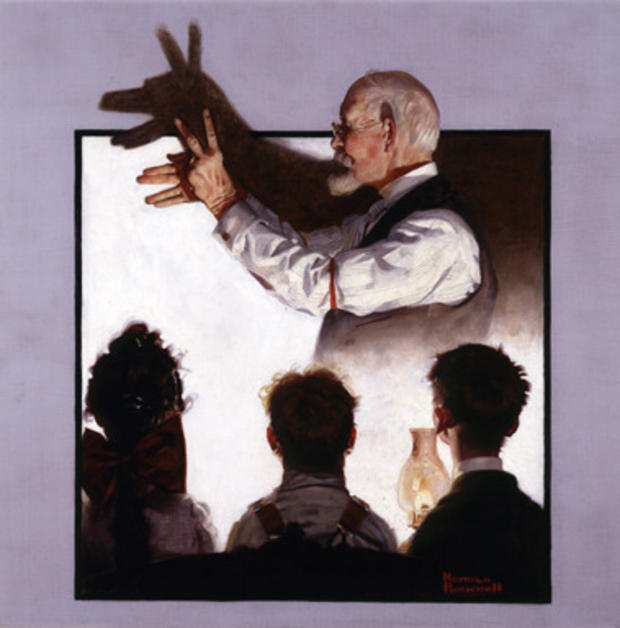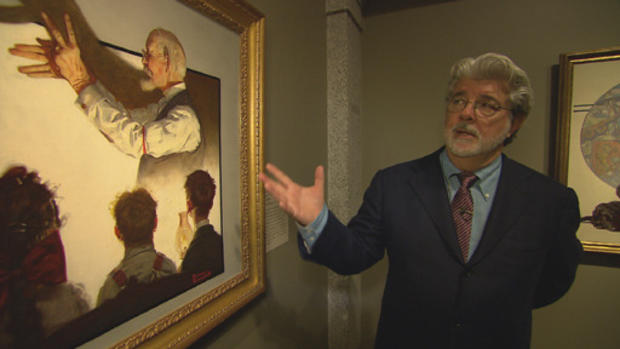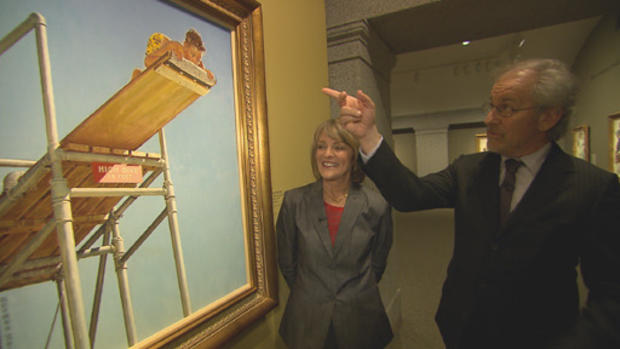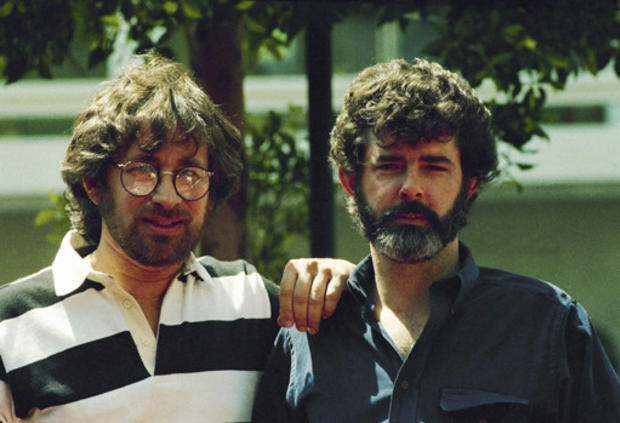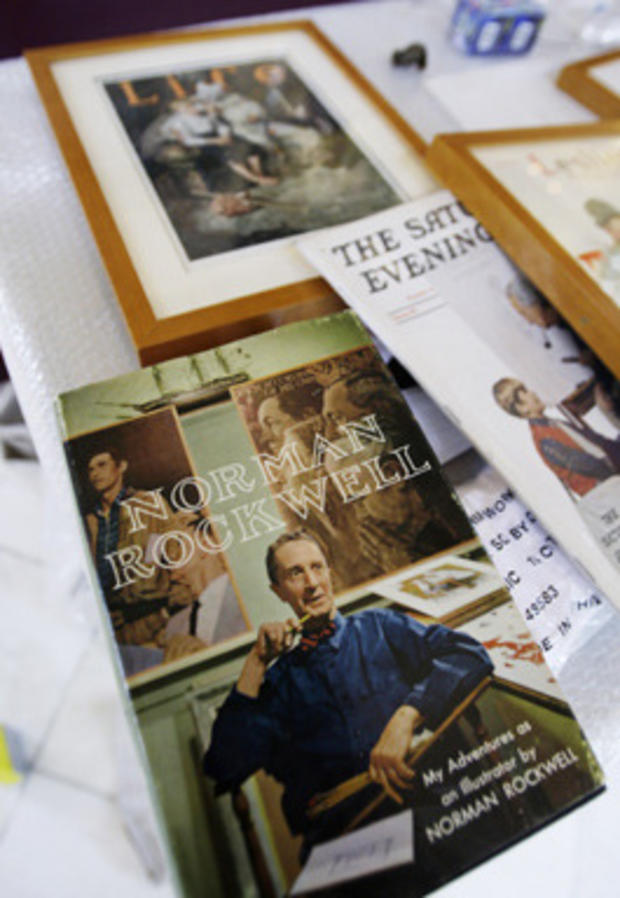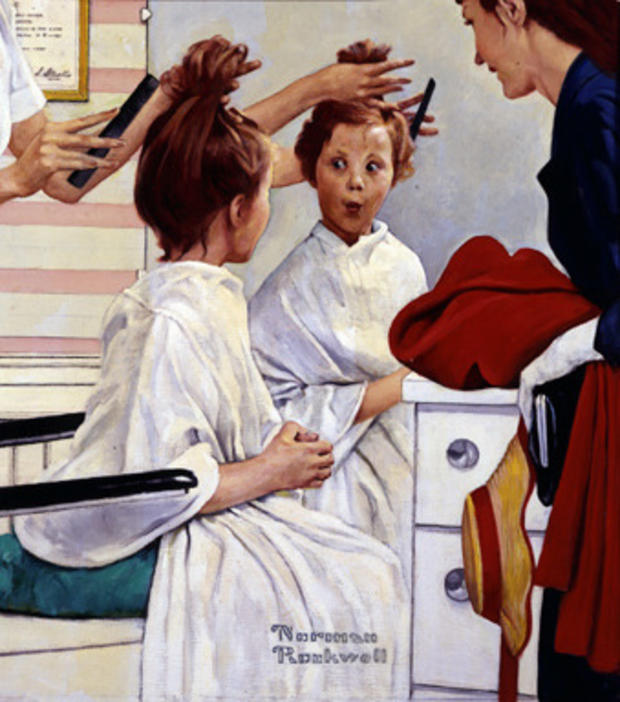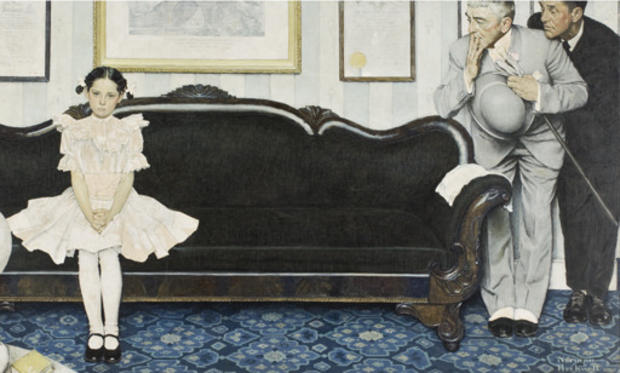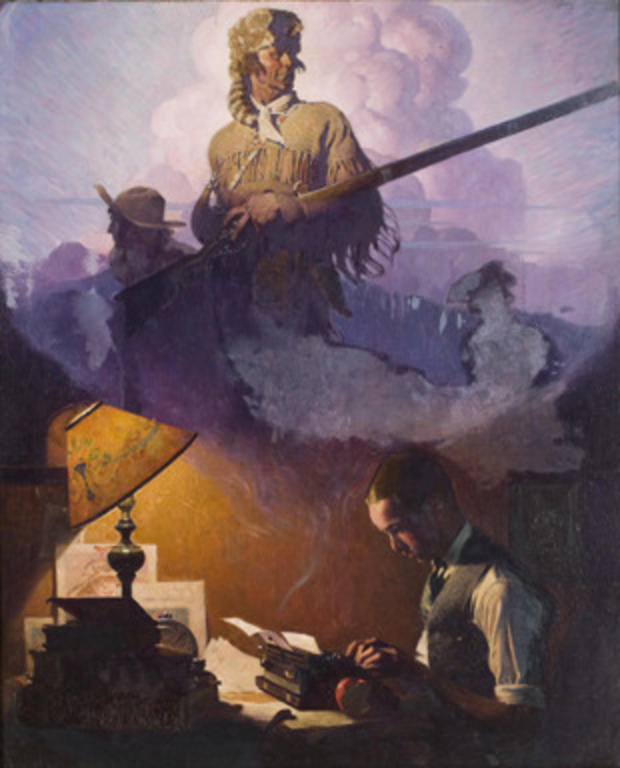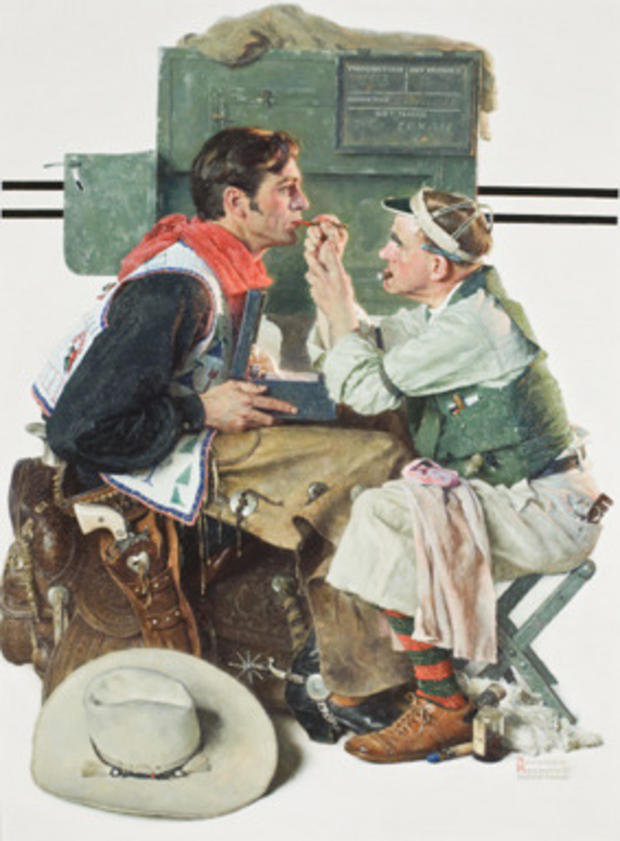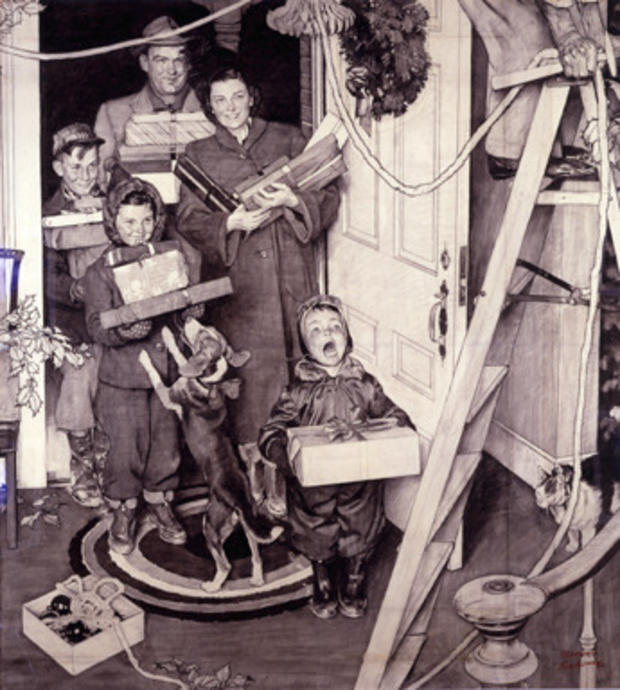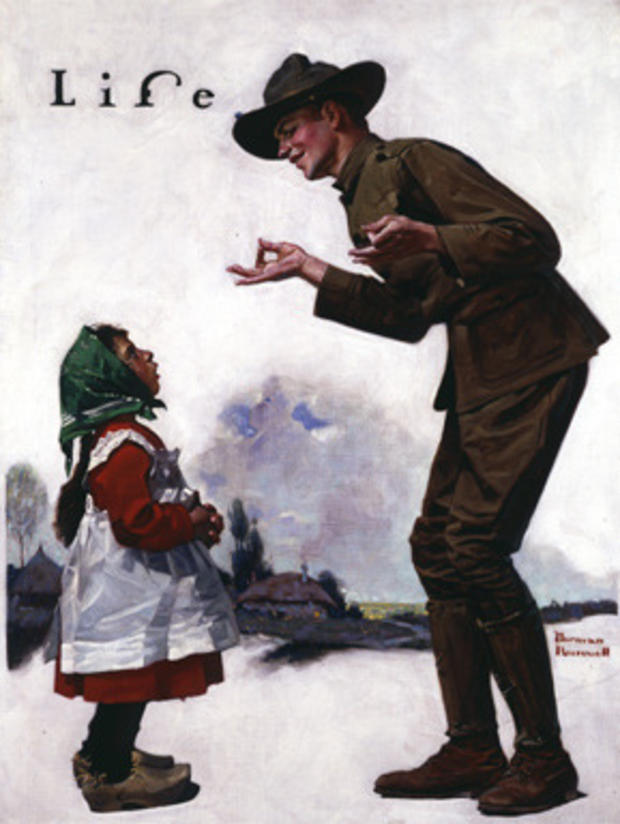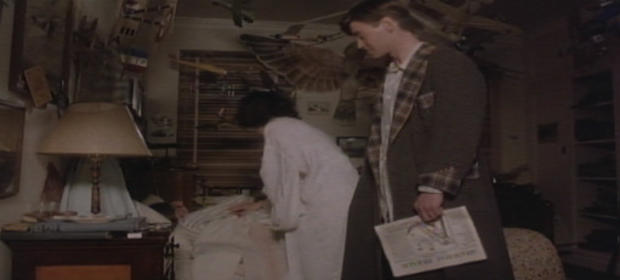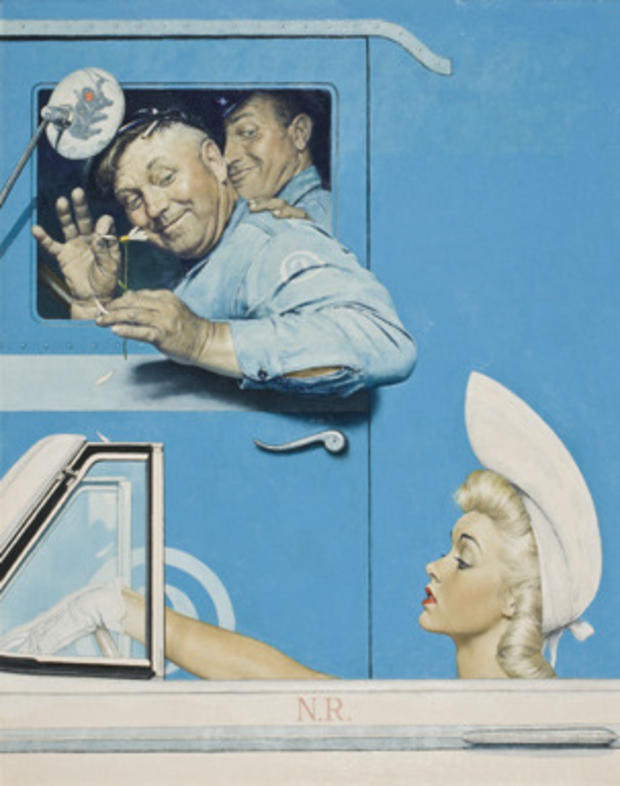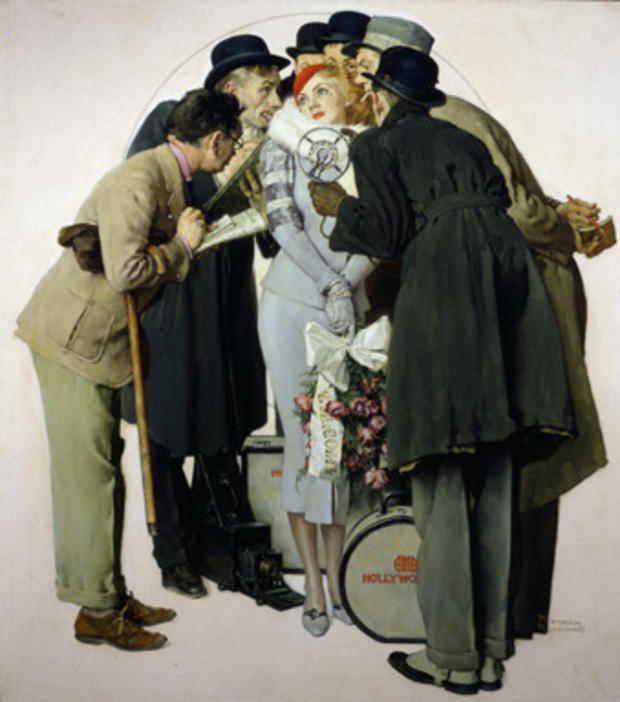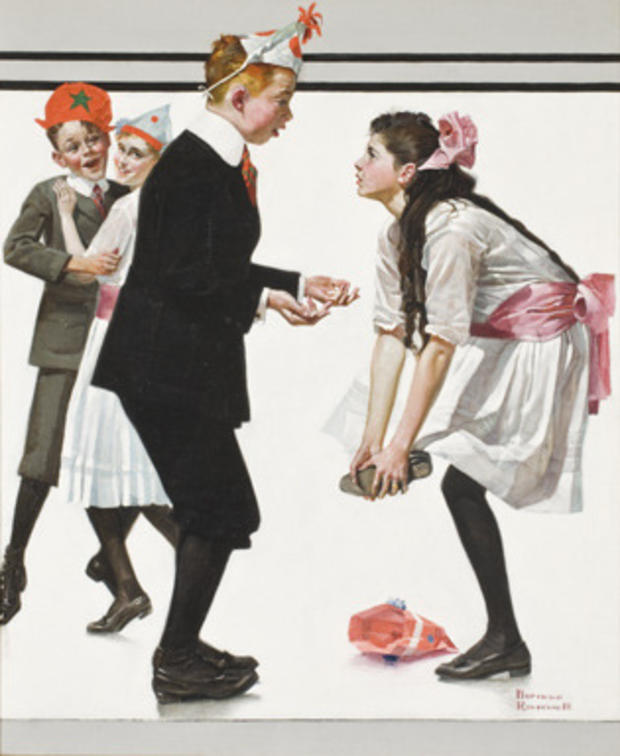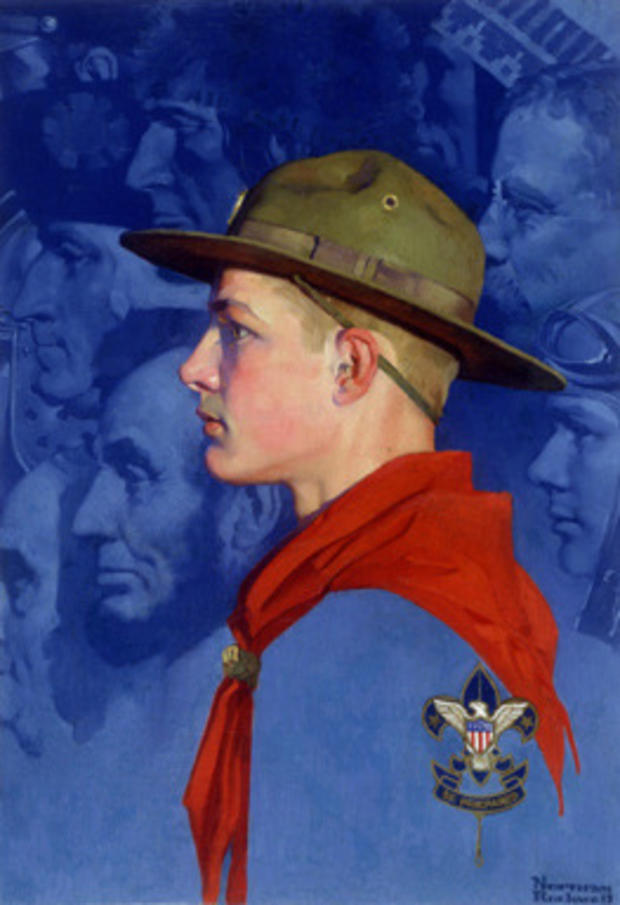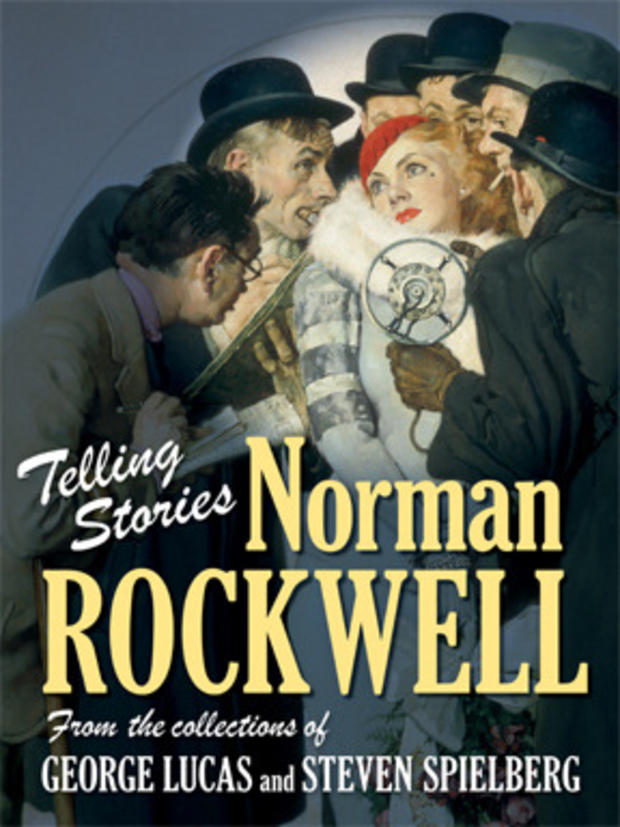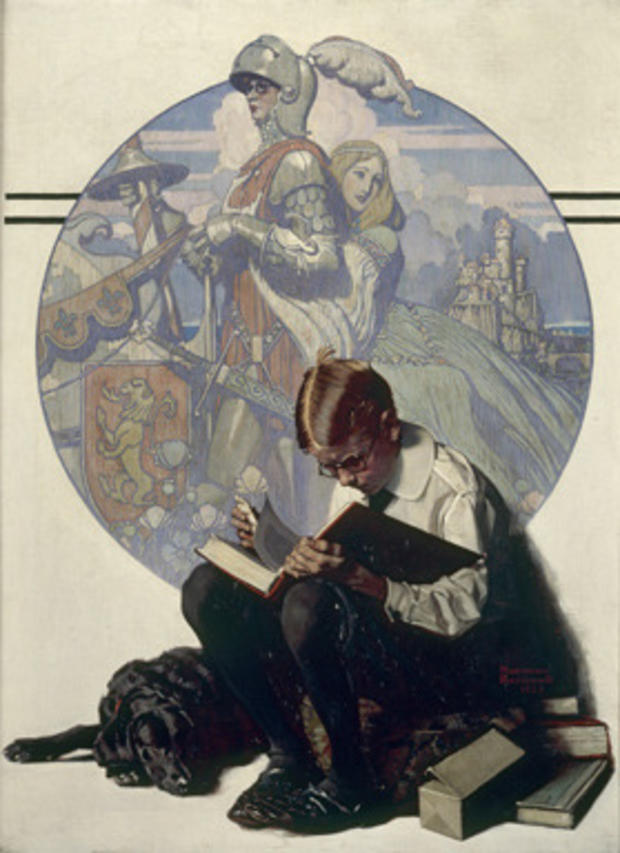Lucas and Spielberg on Norman Rockwell
"You know, so many artists have a tendency to paint without emotion, without any connection to the audience," said Lucas. "And both Steve and I are diehard emotionalists. We love to connect with the audience. Rockwell loved to connect with the audience."
"When I was growing up, Rockwell was a household name — he was everywhere," Lucas said. "Everybody knew about him, everybody knew his work. And you know, as we get into the 21st century some of that begins to fade into another era. And I think this generation needs to be able to look at a part of America that existed in, really, the 20th century."
Lucas added, "And I went out and got two more!"
"I've worked with a lot of kids, and I've often admired Rockwell for how tough it is sometimes to get kids to be natural."
The exhibit "Telling Stories: Norman Rockwell from the Collections of George Lucas and Steven Spielberg" will be at the Smithsonian's American Art Museum in Washington, D.C., through January 2, 2011.
By CBSNews.com producer David Morgan
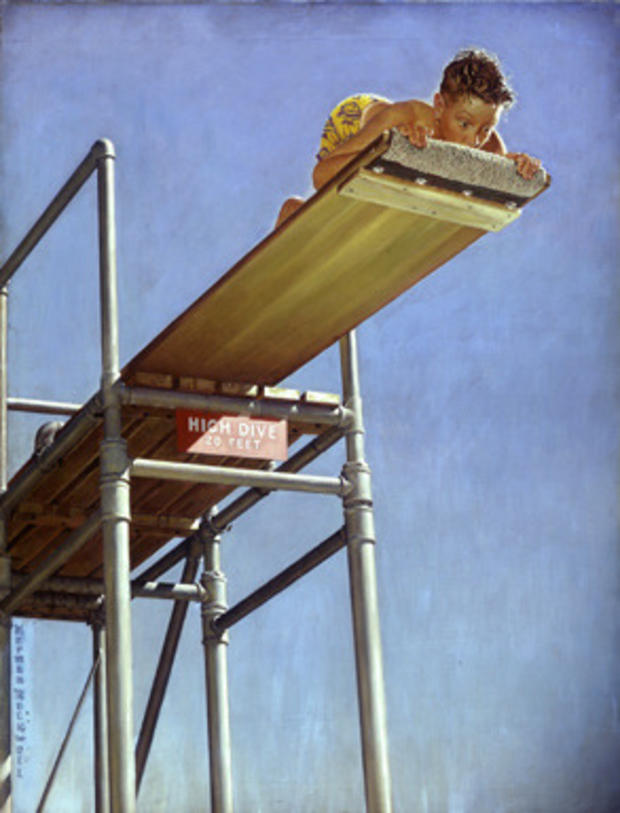
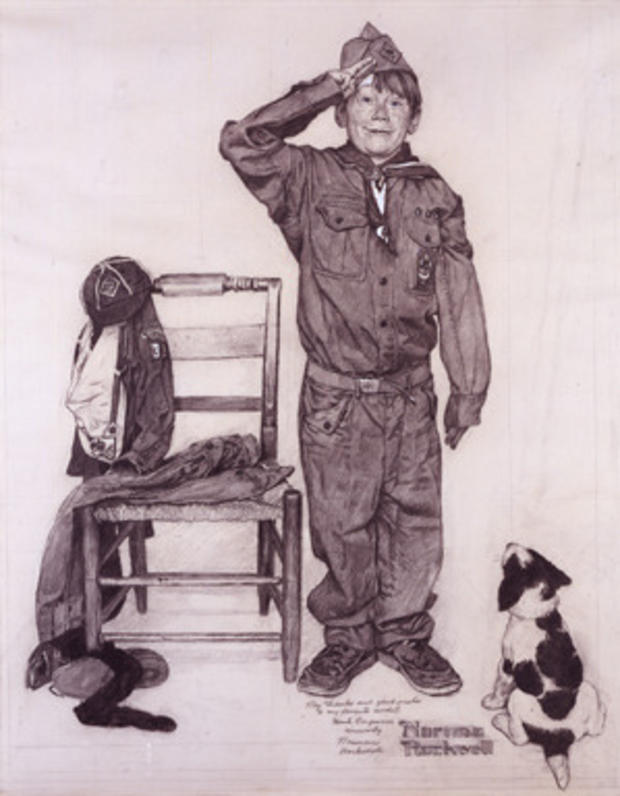
.jpg?v=63c131a0051f3823d92b0d1dffb5e0e4#)
